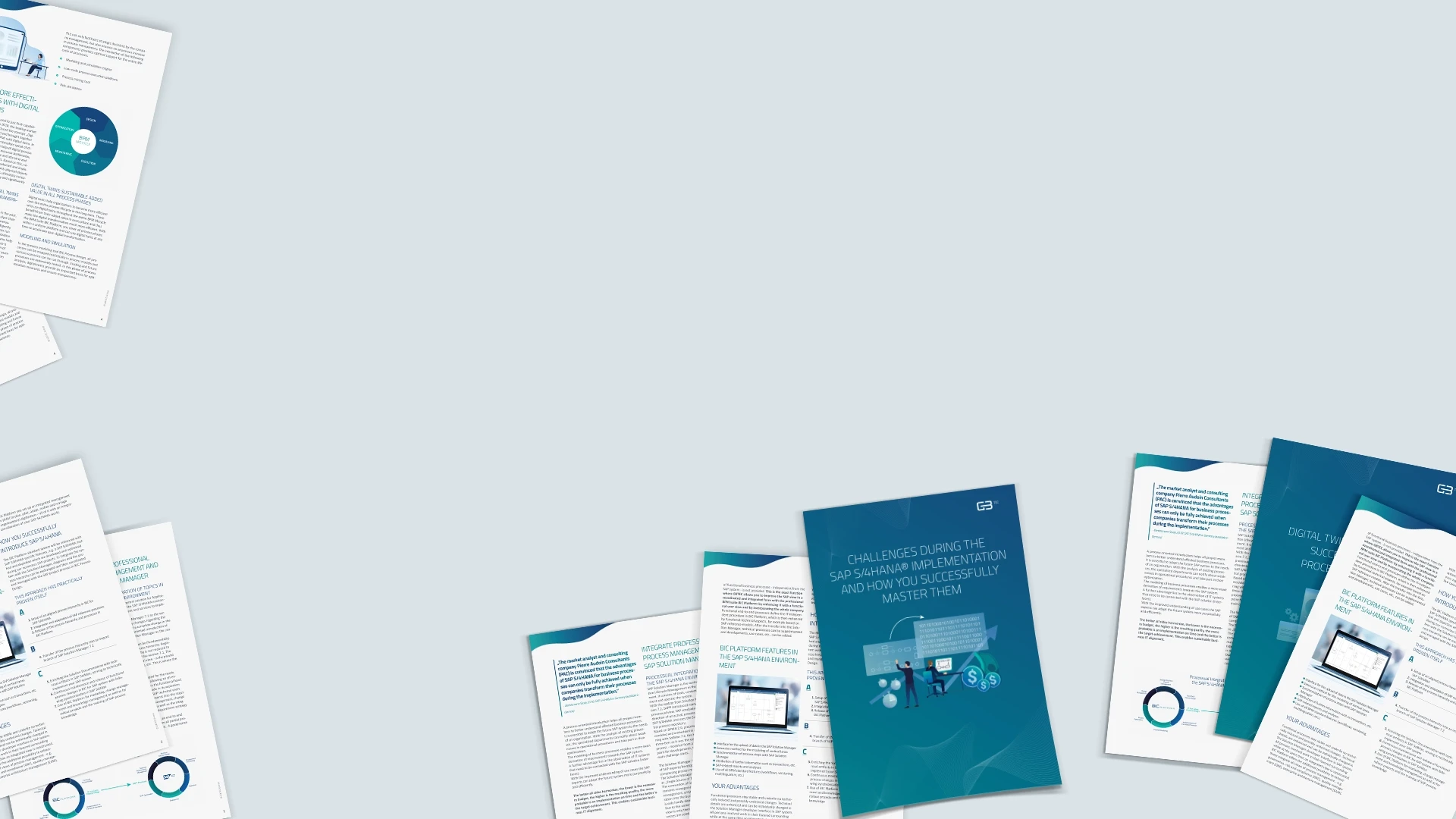BIC Process Design
Understand & Transform
Supercharge your business operations with the most intuitive AI-powered BPM software.
It seems that you come from a German speaking country. Here you can change the language
EnglishOpportunity and risk management is a very complex topic in every company. For example, early warning indicators may indicate the imminent scenario of a pandemic or a massive disruption of the value chain. But this will only work if all possibilities of risk management in the company are recognized and fully exhausted. The fact is that the traditional business management of risks often only uses a "rear view". On the one hand, risk management should draw clear conclusions from the past, on the other hand, the focus should be clearly directed towards the future. Our whitepaper contains the most important do's and don'ts from the world of risk management for you.

Excerpt
Request access to the full version of the whitepaper now.